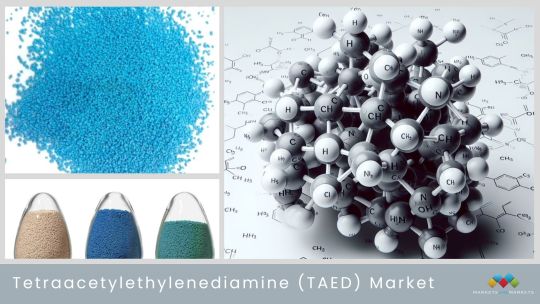#Growth Drivers
Explore tagged Tumblr posts
Text
Residential Flooring Materials Market: Key Trends, Growth Drivers, and Future Projections in 2025

The Residential Flooring Materials Market is poised for significant growth in 2025, driven by evolving consumer preferences, technological advancements, and a heightened focus on sustainability. This blog delves into the key trends, growth drivers, and future projections shaping the residential flooring industry.
Key Trends in the Residential Flooring Materials Market
1. Sustainability Takes Center Stage
Homeowners are increasingly prioritizing eco-friendly flooring options. Manufacturers are responding by introducing products made from recycled materials, low-emission adhesives, and renewable resources. For instance, Mohawk's Ultra Wood Naturally Sustainable Flooring mimics the look of natural hardwood while being environmentally friendly.
2. Rise of Luxury Vinyl Flooring (LVF)
Luxury Vinyl Flooring, including Luxury Vinyl Planks (LVP) and Luxury Vinyl Tiles (LVT), is gaining popularity due to its affordability, durability, and aesthetic appeal. LVF offers the look of natural materials like hardwood and stone but is more cost-effective and easier to maintain.
3. Technological Innovations in Flooring
Smart flooring technologies are emerging, offering enhanced functionality and convenience. These innovations include features like built-in heating systems, soundproofing, and even sensors that monitor foot traffic and wear patterns, providing valuable data for homeowners and property managers.
Growth Drivers in the Residential Flooring Materials Market
1. Increased Housing Construction and Renovations
The ongoing boom in housing construction and renovations is a significant driver of the flooring market. As more homes are built and existing ones are renovated, the demand for quality flooring materials rises.
2. Consumer Demand for Aesthetic and Durable Flooring
Consumers are seeking flooring solutions that combine aesthetics with durability. Materials like hardwood, stone, and high-quality vinyl are in demand for their longevity and visual appeal, making them popular choices for residential projects.
3. Government Initiatives Supporting Housing Development
Government programs aimed at promoting urbanization and affordable housing are contributing to the growth of the residential flooring market. These initiatives often include incentives for construction and renovation projects, further boosting demand for flooring materials.
Future Projections for the Residential Flooring Materials Market
The global flooring market is projected to grow from USD 301.72 billion in 2024 to USD 620.27 billion by 2037, registering a CAGR of around 5.7% during the forecast period from 2025 through 2037.
In particular, the demand for sustainable and innovative flooring solutions is expected to drive market expansion. Consumers' increasing preference for eco-friendly materials, coupled with advancements in flooring technology, will shape the future of the industry.
Conclusion
The Residential Flooring Materials Market in 2025 is characterized by a shift towards sustainability, technological innovation, and consumer-centric designs. As homeowners continue to prioritize eco-friendly and durable flooring options, manufacturers are adapting to meet these demands. The market's growth is further supported by increased housing construction and renovations, alongside government initiatives promoting housing development.
For more detailed insights and projections, visit the full report on the Residential Flooring Materials Market.
0 notes
Text
Why Is the Hydraulic Fluid Market Poised for Huge Growth?
The global Hydraulic Fluid Market has been experiencing steady growth in recent years. But what is driving this expansion? And what does the future hold for this crucial industry? In this blog post, we will dive into the key factors influencing the growth of hydraulic fluids and explore which sectors are making significant impacts on the market.
What is Hydraulic Fluid?
Hydraulic fluid is an essential component in the operation of hydraulic systems. It transmits energy through pressure, lubricates moving parts, and ensures the system's smooth operation. Typically, it performs several roles: energy transmission, anti-wear protection, lubrication, corrosion resistance, cooling, and preventing rust formation. This makes hydraulic fluid indispensable in various industries, such as automotive, construction, agriculture, and manufacturing.
The fluid’s viscosity-temperature performance is crucial for the hydraulic system's efficiency, transmission accuracy, and overall reliability. In short, the better the hydraulic fluid, the better the performance of the equipment. Over the years, the demand for high-quality hydraulic fluid has surged across multiple sectors, contributing to the market's growth.
Hydraulic Fluid Market Insights: Growth and Forecasts
The global hydraulic fluid market was valued at over USD 7.6 billion in 2019 and is projected to reach USD 10 billion by 2027. This growth is expected to happen at a compound annual growth rate (CAGR) of over 3.42% from 2020 to 2027. Several factors contribute to this expansion, including the increasing demand for hydraulic fluids in automotive, industrial sectors, and the rising need for energy-efficient machinery.
Hydraulic systems are essential in automotive and construction machinery, which utilize hydraulic oil as a working medium. As these industries grow, so does the need for hydraulic fluid. Furthermore, industries that require high-speed operations and efficient energy transfer, like the construction sector, are propelling demand for specialized hydraulic fluids.
Factors Driving Growth in the Hydraulic Fluid Market
1. Growing Automotive Industry in the Asia-Pacific Region
The Asia-Pacific (APAC) region is a major player in the Hydraulic Fluid Market. With countries like China, Japan, and South Korea leading global vehicle production, this region has become a significant demand center for hydraulic fluids. Together, these countries account for 42% of global light vehicle production. Additionally, the growing demand for electric vehicles and other high-tech innovations in the automotive sector further boosts the need for hydraulic fluids.
Moreover, countries like Indonesia and the Philippines are also expanding their automobile manufacturing capabilities, thus contributing to the regional growth of hydraulic fluids.
2. Industrial Growth Across the Globe
In terms of industrialization, countries in the APAC region are rapidly developing their infrastructure and manufacturing sectors. For example, China’s manufacturing value-added (MVA) growth rate saw a slight decrease in 2019, but the region remains a global industrial powerhouse. This continued industrialization, coupled with significant construction and infrastructure development, has resulted in higher demand for hydraulic fluids, especially in construction machinery, mining equipment, and industrial machinery.
North America and Europe also continue to be key players in the Hydraulic Fluid Market, though the rate of growth has slowed slightly due to economic factors like trade frictions and uncertainty surrounding Brexit. Nevertheless, the increasing need for efficient industrial operations ensures that demand for hydraulic fluids will remain strong.
Hydraulic Fluid Segmentation: A Deeper Dive
1. Base Oil Types
Hydraulic fluids come in different formulations, primarily divided into three categories based on their base oil: mineral oil, synthetic oil, and bio-based oil.
Mineral Oil: The most common and cost-effective hydraulic fluid. Due to its availability and low price, mineral oil is expected to dominate the market in the coming years. It is widely used in industries like construction and automotive for lubrication and energy transmission.
Synthetic Oil: These oils are designed for high-performance machinery. Their superior fluid stability and excellent lubricity make them a popular choice for high-speed operations and systems that require precision. Although synthetic oils are more expensive, their advantages make them a lucrative option for industrial sectors that demand more from their hydraulic systems.
Bio-based Oil: With increasing awareness about environmental sustainability, the demand for bio-based hydraulic fluids is growing. These oils are made from renewable resources and are often biodegradable, reducing the risk of environmental damage in case of spills.
2. Point of Sale
Hydraulic fluid can be purchased from two primary points of sale: OEM (Original Equipment Manufacturers) and aftermarket.
OEM: The OEM segment is the largest and expected to remain dominant. Manufacturers are focusing on creating hydraulic fluids that offer extended life, improved efficiency, and enhanced performance. These innovations lead to better system reliability, which is a top priority for industries reliant on hydraulic machinery.
Aftermarket: The aftermarket segment is growing at a rapid pace, fueled by the rise of online platforms and third-party providers. As the demand for environmentally friendly products grows, there is an increasing preference for hydraulic fluids that have minimal ecological impact.
3. End-User Industries
Hydraulic fluids are critical in various end-user industries. Key sectors include:
Construction: The construction industry is expected to be the largest consumer of hydraulic fluids by 2027. With the growth of residential and infrastructure projects, especially in emerging economies, the demand for hydraulic fluid in construction machinery continues to rise.
Oil & Gas: The oil and gas industry’s continued expansion, particularly in regions like the Middle East and Africa, is fueling the demand for hydraulic fluids. These fluids are used in drilling rigs, pipelines, and heavy-duty machinery, ensuring smooth operations under high pressure and temperatures.
Agriculture: The agricultural sector also relies heavily on hydraulic systems for equipment such as tractors, harvesters, and irrigation systems. As the demand for food production rises globally, the need for high-performance hydraulic fluids in agriculture is on the rise.
Regional Analysis: Where is the Hydraulic Fluid Market Growing?
The Hydraulic Fluid Market is geographically diverse, with different regions showing unique growth patterns:
Asia Pacific: As mentioned, APAC is poised to dominate the hydraulic fluid market by 2027. Rapid industrialization, urbanization, and an increasing population in countries like China and India are major growth drivers in the region.
North America: The demand for hydraulic fluids in the North American region will continue to grow, driven by the construction, aerospace, and automotive sectors. Heavy engineering and infrastructure projects require reliable hydraulic systems, boosting market demand.
Europe: Europe has a steady demand for hydraulic fluids, especially from the automotive, manufacturing, and industrial sectors. However, economic uncertainties may slow down the pace of growth in certain markets.
Competitor Landscape: Key Players in the Market
Some of the leading companies in the Hydraulic Fluid Market include ExxonMobil, Shell, BP, Chevron, and Sinopec. These companies invest heavily in research and development to produce high-performance hydraulic fluids that meet the growing demands of various industries.
These key players are focused on creating innovative solutions that enhance fluid stability, extend the lifespan of hydraulic systems, and reduce environmental impact. The growing need for more sustainable, high-quality hydraulic fluids is prompting these companies to innovate and stay ahead of the competition.
Conclusion
The Hydraulic Fluid Market is expanding rapidly due to various factors, including industrial growth, increased automotive production, and the ongoing demand for high-efficiency machinery. As sectors like construction, mining, agriculture, and oil and gas continue to grow, so too will the need for advanced hydraulic fluids.
The market is witnessing a shift toward synthetic and bio-based oils, as industries place more emphasis on performance and environmental sustainability. With strong demand expected across regions, the hydraulic fluid market is likely to continue its upward trajectory in the coming years.
For more insights into the Hydraulic Fluid Market, including detailed forecasts and trends, check out this comprehensive Hydraulic Fluid Market report.
0 notes
Text
Asia TIC Market
The 𝗔𝘀𝗶𝗮 𝗧𝗜𝗖 𝗠𝗮𝗿𝗸𝗲𝘁 size was valued at 𝗨𝗦𝗗 𝟱.𝟰 𝗯𝗶𝗹𝗹𝗶𝗼𝗻 𝗶𝗻 𝟮𝟬𝟮𝟯. It is likely to grow to 𝗨𝗦𝗗 𝟵.𝟲 𝗯𝗶𝗹𝗹𝗶𝗼𝗻 𝗯𝘆 𝟮𝟬𝟯𝟬 𝗮𝘁 𝗮 𝗖𝗔𝗚𝗥 𝗼𝗳 𝟳.𝟮% during the forecast period between 2025 and 2030.
𝗥𝗲𝗾𝘂𝗲𝘀𝘁 𝘁𝗼 𝗴𝗲𝘁 𝗮 𝗳𝗿𝗲𝗲 𝘀𝗮𝗺𝗽𝗹𝗲 𝗰𝗼𝗽𝘆 𝗼𝗳 𝘁𝗵𝗶𝘀 𝗿𝗲𝘀𝗲𝗮𝗿𝗰𝗵 𝗿𝗲𝗽𝗼𝗿𝘁 𝗮𝘁 https://shorturl.at/Zwv4U
☛ 𝗞𝗲𝘆 𝗙𝗲𝗮𝘁𝘂𝗿𝗲𝘀 𝗼𝗳 𝘁𝗵𝗲 𝗔𝘀𝗶𝗮 𝗧𝗜𝗖 𝗠𝗮𝗿𝗸𝗲𝘁: High Consumer DemandInnovation HubsStrong Manufacturing BaseGovernment Initiatives and PoliciesRising Startups and UnicornsAs a global hub for innovation, manufacturing, and technological advancement, Asia holds a significant position in the global TIC ecosystem.
☛ 𝗙𝘂𝘁𝘂𝗿𝗲 𝗧𝗿𝗲𝗻𝗱𝘀: The adoption of AI and robotic process automation will transform industries. Focus on energy-efficient technologies and sustainable practices. Countries like Japan and South Korea are already investing in 6G research. Accelerating cloud adoption and edge technology to enhance real-time data processing.
☛ 𝗞𝗲𝘆 𝗣𝗹𝗮𝘆𝗲𝗿𝘀: SGS Group, Intertek Group PLC, Bureau Veritas Group, AmSpec Services LLC, HQTS Group Ltd, Element Materials Technology, Eurofins Scientific, C antenna Inspection SA, UL LLC, TUV SUD, Apave Japan Co. Limited, TUV Rheinland, Seoul Inspection & Testing Co. Limited
#Asia TICMarket
0 notes
Text
Opportunities in the TAED Market: Growth Drivers and Key Trends

Tetraacetylethylenediamine (TAED) is not just another chemical compound—it’s a game-changer for industries striving to balance efficiency, cost-effectiveness, and sustainability. Whether you’re in the textile sector, the consumer goods cleaning care space, or the paper and pulp industry, TAED has likely impacted your processes in ways that are both profound and practical.
The Significance of TAED Across Industries
Tetraacetylethylenediamine (TAED) Market size is projected to grow from USD 881 million in 2024 to USD 1,070 million by 2029, registering a CAGR of 4.0% during the forecast period.
TAED, an organic compound widely used as an activator in oxygen-based bleaching agents, is valued for its ability to enable efficient bleaching at lower temperatures. When paired with hydrogen peroxide, it produces peracetic acid—a highly effective oxidizing agent. This unique chemical reaction has made TAED an essential ingredient across diverse industries:
Textile Industry:Bleaching textiles without compromising fabric integrity is a persistent challenge. TAED addresses this by allowing effective bleaching at reduced temperatures, helping textile manufacturers save energy while achieving brilliant whiteness and maintaining fabric strength.
Consumer Goods and Cleaning Care:From dishwashing tablets to laundry detergents, TAED has become synonymous with effective, low-temperature cleaning. Consumers want spotless results without the environmental guilt, and TAED delivers by cutting down on energy consumption during the wash cycle.
Paper and Pulp Industry:For the paper and pulp sector, transitioning away from chlorine-based bleaching processes is vital to meet stringent environmental regulations. TAED provides a greener alternative, ensuring high-quality, bright paper production without the associated ecological impact.
Key Drivers of TAED Market Growth
The growing relevance of TAED can be traced to several trends shaping today’s industrial landscape:
Sustainability at the Forefront:Companies worldwide are under immense pressure to adopt eco-friendly practices. TAED, being biodegradable and non-toxic, aligns perfectly with this shift, helping businesses meet regulatory requirements while reducing their environmental footprint.
Energy Efficiency Demands:Rising energy costs have forced industries to rethink traditional high-temperature processes. TAED’s efficiency at lower temperatures doesn’t just cut costs—it also supports corporate sustainability goals.
Evolving Consumer Preferences:In the cleaning and personal care sectors, modern consumers are demanding products that are not only effective but also environmentally conscious. TAED’s role in enabling low-energy, high-performance cleaning solutions meets this demand head-on.
Global Market Insights: Regional Dynamics
The TAED market is witnessing diverse growth patterns globally:
Europe:Europe’s stringent environmental regulations have made it a leader in TAED adoption. The region’s well-established textile and cleaning product industries have embraced TAED for its sustainable benefits.
Asia-Pacific:Industrial expansion in countries like India and China has fueled demand for TAED. With growing urbanization and a rising middle class, the region is experiencing increased demand for both high-quality textiles and sustainable cleaning products.
North America:In North America, TAED has carved a niche in the pulp and paper sector, where its eco-friendly bleaching properties are helping businesses meet rigorous environmental standards.
Challenges the TAED Market Must Overcome
Despite its advantages, the TAED market is not without obstacles:
Volatility in Raw Material Costs:Raw materials used in TAED production are subject to price fluctuations, which can create challenges for manufacturers in maintaining stable pricing.
Competition from Alternatives:The market has seen competition from other bleaching agents that promise similar efficacy. To stay ahead, TAED manufacturers need to innovate and diversify applications.
Complex Regulatory Landscapes:While regulations promote sustainability, navigating varying regional compliance standards can be daunting, particularly for global players.
The Road Ahead: Opportunities and Innovation
The future of TAED looks bright as industries increasingly prioritize green chemistry and energy efficiency. Innovations in TAED formulations, such as enhancing its efficacy for emerging applications like wastewater treatment, are expected to unlock new market opportunities. Additionally, collaborative efforts between industries and researchers may yield breakthroughs in cost optimization and broader industrial usage.
To know more Download PDF Report :
As industries evolve to meet the twin demands of performance and sustainability, the role of TAED becomes ever more significant. For businesses in the textile, cleaning care, and paper and pulp sectors, adopting TAED is not just about staying relevant—it’s about leading the charge toward a greener future.
If your business operates in these fields, it’s time to explore how TAED can enhance your processes, reduce costs, and help you meet environmental standards. With the right strategies and investments, the potential of TAED to revolutionize industries is immense.
#TAED Market#Market Opportunities#Growth Drivers#Key Trends#Sustainability#Industry Insights#Market Analysis#TAED Applications#Chemical Industry#Green Chemistry#Industrial Trends
0 notes
Text
Unlocking the Potential: A Comprehensive Overview of the Printing Ink Market
Introduction:
The printing ink market is a crucial component of the printing industry, supporting various sectors such as packaging, publishing, commercial printing, and more. As technology continues to evolve and environmental concerns gain prominence, the printing ink market is experiencing significant shifts. This comprehensive overview delves into the key aspects shaping the printing ink market landscape.
Market Analysis:
The printing ink market is witnessing steady growth, driven by advancements in printing technology and the increasing demand for printed materials across industries. With the rise of digital printing, there is a growing need for high-quality, versatile printing inks compatible with diverse printing processes.
Industry Trends:
Several trends are influencing the printing ink market, including:
Shift Towards Digital Printing: Digital printing technologies are gaining traction due to their efficiency, customization capabilities, and reduced setup times. This trend is driving the demand for digital inks tailored for various substrates.
Sustainability: Environmental concerns are driving the development of eco-friendly printing inks formulated with renewable resources and fewer volatile organic compounds (VOCs). Manufacturers are focusing on sustainable ink formulations to meet regulatory requirements and consumer preferences.
Innovation: Continuous innovation in ink formulations is enhancing print quality, durability, and compatibility with different substrates. Nano-based inks, UV-curable inks, and specialty inks are among the innovations driving market growth.
Emerging Markets: Emerging economies are witnessing rapid industrialization and urbanization, leading to increased demand for printed materials across sectors such as packaging, textiles, and advertising. This presents lucrative opportunities for ink manufacturers to expand their presence in these regions.
Ink Types:
Printing inks are categorized based on their formulation and application, including:
Lithographic Inks: Used in offset printing for high-quality commercial printing applications such as magazines, catalogs, and brochures.
Flexographic Inks: Ideal for packaging printing due to their ability to adhere to various substrates and withstand the rigors of packaging processes.
Gravure Inks: Commonly used in high-speed printing processes for packaging materials, labels, and flexible packaging.
Digital Inks: Specifically designed for digital printing technologies such as inkjet and electrophotography, offering quick drying times and vibrant colors.
Market Size and Regional Analysis:
The printing ink market is geographically diverse, with key regions including North America, Europe, Asia Pacific, Latin America, and the Middle East & Africa. Asia Pacific dominates the market due to the presence of major manufacturing hubs and the growing demand for printed packaging in countries like China and India. North America and Europe are also significant markets, driven by technological advancements and sustainability initiatives.
Growth Drivers:
Key factors driving the growth of the printing ink market include:
Rise in Packaging Industry: The booming packaging industry, driven by e-commerce, food & beverage, and consumer goods sectors, is fueling the demand for high-quality printing inks for packaging applications.
Technological Advancements: Continuous innovation in printing technology, including digital printing and inkjet technology, is expanding the scope of applications for printing inks and driving market growth.
Increasing Demand for Customization: Consumers are increasingly seeking personalized and customized products, driving the need for printing solutions that offer flexibility and customization capabilities.
Conclusion:
The printing ink market is undergoing a transformation, driven by technological advancements, sustainability initiatives, and evolving consumer preferences. As the industry embraces digitalization and environmental consciousness, ink manufacturers are innovating to meet the demands of a dynamic market landscape. By staying abreast of industry trends and investing in research and development, stakeholders can unlock the full potential of the printing ink market.
#Printing Ink#Market Analysis#Industry Trends#Printing Technology#Ink Types#Growth Drivers#Market Size#Regional Analysis#Sustainability#Digital Printing#Packaging Industry#Environmental Regulations#Innovation#Emerging Markets
0 notes
Text
Exploring the Global Cocoa & Chocolate Market Trends
The Cocoa & Chocolate Market market includes a wide range of products such as cocoa powder, cocoa butter, chocolate bars, chocolate confectionery, chocolate spreads, baking chocolate, and cocoa-based beverages. Each segment caters to different consumer preferences and usage occasions.
The global cocoa and chocolate market is significant, driven by factors such as increasing consumer demand for indulgent treats, rising disposable incomes, and the popularity of chocolate-based products worldwide.
⏩ 𝐆𝐞𝐭 𝐑𝐞𝐬𝐞𝐚𝐫𝐜𝐡 𝐏𝐃𝐅 >> https://introspectivemarketresearch.com/request/7287

Cocoa & Chocolate Market
cocoa and chocolate market involves analyzing various factors such as production, consumption, market trends, key players, growth drivers, challenges, and regional dynamics. Cocoa and chocolate are integral parts of the global confectionery industry, with widespread applications in food and beverage products. Here’s an overview of the market research on the cocoa and chocolate market:
Players Covered in Cocoa & Chocolate Market are:
ADM
Cargill
Barry Callebaut
Plot Ghana
Dutch Cocoa
Nestle
Olam
Dandelion Chocolate
Fuji Oil
Guittard Chocolate
Mondelez
Puratos
IRCA
Market Drivers
Growing Chocolate Consumption: Chocolate consumption continues to rise globally, fueled by increasing urbanization, changing consumer lifestyles, and the growing popularity of chocolate-based snacks, desserts, and beverages.
Innovation and Product Diversification: Manufacturers are innovating with new flavors, formats, and packaging to attract consumers and differentiate their products in the market. This includes flavored chocolates, functional chocolates, and chocolate with inclusions such as nuts, fruits, and spices.
Expanding Market Opportunities: Emerging markets in Asia-Pacific, Latin America, and Africa present significant growth opportunities for the cocoa and chocolate industry, driven by rising disposable incomes, urbanization, and changing consumer preferences.
Segments Covered:
By Type
CocoaCocoa PowderCocoa ButterCocoa LiquorOthers
ChocolateDark ChocolateWhite ChocolateMilk ChocolateFilled Chocolate
By Application
Food & Beverages and Confectionary
Cosmetics
Pharmaceuticals
Others
For more information click here : https://introspectivemarketresearch.com/inquiry/7287
Conclusion
The cocoa and chocolate market offers significant growth opportunities driven by factors such as growing chocolate consumption, health and wellness trends, and expanding market reach in emerging economies. However, manufacturers must address sustainability concerns, manage supply chain risks, and innovate with new products and flavors to stay competitive in the dynamic and evolving chocolate industry.
About us :
Introspective Market Research (introspectivemarketresearch.com) is a visionary research consulting firm dedicated to assist our clients grow and have a successful impact on the market. Our team at IMR is ready to assist our clients flourish their business by offering strategies to gain success and monopoly in their respective fields. We are a global market research company, specialized in using big data and advanced analytics to show the bigger picture of the market trends. We help our clients to think differently and build better tomorrow for all of us. We are a technology-driven research company, we analyze extremely large sets of data to discover deeper insights and provide conclusive consulting. We not only provide intelligence solutions, but we help our clients in how they can achieve their goals.
Contact us:
Introspective Market Research
3001 S King Drive, Chicago, Illinois 60616
USA Ph no: +1–773–382–1049
Email : [email protected]
#Cocoa & Chocolate Market#cocoa and chocolate market involves analyzing various factors such as production#consumption#market trends#key players#growth drivers#challenges#and regional dynamics. Cocoa and chocolate are integral parts of the global confectionery industry#with widespread applications in food and beverage products. Here’s an overview of the market research on the cocoa and chocolate market:#Players Covered in Cocoa & Chocolate Market are:#ADM#Cargill#Barry Callebaut#Plot Ghana#Dutch Cocoa#Nestle#Olam#Dandelion Chocolate#Fuji Oil#Guittard Chocolate#Mondelez#Puratos#IRCA#Market Drivers#Growing Chocolate Consumption: Chocolate consumption continues to rise globally#fueled by increasing urbanization#changing consumer lifestyles#and the growing popularity of chocolate-based snacks#desserts#and beverages.
0 notes
Text
Automatic Self-Piercing Rivets Market is Powered by increasing Automation in Manufacturing
The automatic self-piercing rivets market had a total revenue of about USD 198.1 million in 2023, and it will power at a rate of 4.1%, to touch USD 260.9 million by 2030. This has a lot to do with the enhanced automation in manufacturing, the growing requirement for lightweight automobiles, cost-efficiency, developments in material tech, and the increasing emphasis on sustainability. The Almac…
View On WordPress
#applications#Automatic self-piercing rivets#challenges#Engineering#Fastening solutions#Growth drivers#industry analysis#innovations#Manufacturing#Market dynamics#market insights#Regulatory influences#Trends
0 notes
Text
Malaysia Diesel Generator Set Market To Hit USD 97.9 Million by 2030
Improved fuel effectiveness and low operating prices are some of key advantages of diesel generators. Therefore, these are more popular in emerging economies, mostly in APAC. Further, the Malaysian diesel generator set market will reach USD 97.9 million by 2030, according to P&S Intelligence.

The growth of this industry is credited to the government is focusing on the development of infrastructural to manage users with under the 40% income bracket in 2029, with a scheme to construct 1 million structures of housing.
Moreover, as part of the 2021 Budget, the government announced more plans to assist the construction industry, such as partnerships with financial bodies.
The nation allocated funding to the People's Housing Program, the Rumah Mesra Rakyat AND Perumahan Penjawat Awam dwelling initiatives, to create housing units for low-income homeowners. The demand for diesel generator sets will rise in the near future due to the rising number of residential homes and commercial buildings.
Additionally, the country's emphasis is on producing more items with value added in order to strengthen its economy, which motivates startups to grow their manufacturing facilities and increases demand for these generator sets.
Malaysia's need for energy is rapidly growing, but up until now, the supply has not kept up with demand, causing frequent power outages that are primarily brought on by natural disasters. Due to Malaysia's significant risk of flooding and tsunamis, the government closes power plants for safety.
For instance, across six states and 333 electricity substations, TNB temporarily closed off 333 power substations in December 2021. 17,251 electricity users in Pahang, 4,450 in Kuala Lumpur, 5,062 in Selangor, 470 in Kelantan, 634 in Melaka, and 284 in Negeri Sembilan were impacted by the shutdown.
However, at temporary evacuation shelters without access to substation power, electricity was provided by portable diesel generators. As a result, the nation's ongoing power outage issue is driving up need for diesel generator sets there.
Additionally, a lot of international corporations are setting up shop in Malaysia due to the country's advantageous business and consumer climate, affinity for American goods, well-established infrastructure and legal system, and ease of making profits. These elements contribute to the expansion of the business sector, which is raising need for diesel generator sets in the nation.
To stay competitive, major players in the Malaysian diesel generator set industry have taken part in a number of strategic advancements, such product releases. For instance, Cummins Inc. launched the NEW EC-AGS+ wireless control system for Onan gas and diesel DG sets in past year.
#Malaysia Diesel Generator Set Market#Trends#Growth Drivers#Strategic Insights#Technological Advancements#Regulatory Changes#Industry Landscape#Stakeholders#Investors#Industry Professionals#Market Segmentation#Regional Dynamics#Competitive Scenarios#Emerging Opportunities#Challenges#Informed Decision-making
0 notes
Text
Rise in Digital Collection Techniques and Improvement in UAE Legal System Related to Debt Collection Will Boost UAE Debt Collection Market: Ken Research
1.Debt Collection Market in UAE expanded at a CAGR of 11.6% between 2017 and 2022

Interested to Know More about this Report, Request for a sample report
The collection industry witnessed increasing growth rates right before and during the COVID-19 pandemic due to a sharp rise in NPL’s, use of technology like digital collection, speech analytics, predictive dialers etc. and rise in collection efforts by the agencies to sustain themselves in the market. The total number of cases settled by debt collection companies in UAE in 2022 stood at more than 200,000 growing at a CAGR of 11.6% from 2017. The Financing segment has the highest ticket size with non-finance being the lowest. There was a sudden increase in debt collected and cases settled in 2021 due to increased defaults in 2020 due to pandemic leading to more cases being outsourced and hence, companies improved upon their efforts to collect more debt over the next period.
2.Most of the Debt Collection Agencies and Law Firms have their presence in Abu Dhabi and Dubai.

Visit this Link :- Request for custom report
The majority of the collection agencies are based out of Abu Dhabi, Dubai and Ras Al-Khaimah accounting for more than 70% of the total market. This happens due to ease of legal structure in these emirates as compared to the others as they have their own local judicial systems and do not follow the federal judicial systems present in emirates like Sharjah, Ajman etc. Presence of free zones including DIFC in Dubai and ADGM in Abu Dhabi also acts as a incentive for companies to establish themselves in these regions due to benefits.
3.Pandemic-induced trend, a greater emphasis on NLP techniques and maintaining proper documentation are acting as key growth drivers.
Collection agencies are extensively using various speech analytics tools to record and analyse customer conversations. This enables to maintain security and gain insights into client expectations. The information gathered can further be used for training of employees adapting them to different situations while negotiating and hence, improving their performance which would act as a key growth driver for debt collection companies. In addition, companies are maintaining proper documentation and proof for all debt provided by them to corporates and individuals. This makes it much easier for Debt Collection agencies to recover the debt in case of a default both amicably and legally as well through payment order method. Collection companies which provide settlement plans to debtors have start taking post-dated cheques as a proof for future payment. Changing IT policies require companies to maintain complete confidentiality of client information due to threat of data breach. All this factors will provide more growth to collection industry. Moreover, Covid-19 made the public more aware about the existence of debt collection services which motivated them to fulfil their debt obligations. Pandemic also increased the number of default accounts bringing more business for collection agencies and inducing growth.
#UAE Debt Collection Industry#Growth Drivers#Market Analysis#Market Size#Trends#Top Companies#Market Aggregators.
0 notes
Text
When someone like Jacques Villeneuve has a WDC I think you can safely say it probably shouldn’t be used as a marker for level of impact or importance to formula 1. But also, why should the lack of championships somehow make a person less deserving of respect? Using the WDC title as mark for relevance in formula 1 is an old school boys club way of keeping this sport as insular as possible. The percentage of drivers who make it to formula 1 (much less spend over a decade in the sport) and win a WDC is incredibly low and if that’s truly the only thing that makes someone worthy of admiration or respect, this sport will never grow or evolve (which to be fair is what he wants).
#you can’t tout having the 20 best drivers in the world if you then turn around and say well actually only 3 of them matter#arguably what has made this sport more interesting and helped its growth is the drivers who don’t win a WDC but keep fighting#the draw and interest is the pursuit of the thing#not necessarily thr achievement because so few will get that#and sure it’s definitely an accomplishment to respect#but if it changes how you view someone or how they view themselves thats a problem#the most impressive thing about max isn’t the 4 titles it’s that he doesn’t actually care about them and wants to keep racing#he wants to get better and not rest in his laurels like some bald friend of epstein I could name
44 notes
·
View notes
Text
Collagen Drinks Market: Key Trends, Growth Drivers, and Future Opportunities for Industry Leaders

The Collagen Drinks Market has been experiencing significant growth, driven by increasing consumer awareness of health and wellness benefits. Collagen, a vital protein in the human body, plays a crucial role in skin elasticity, joint health, and overall vitality. As the demand for functional beverages rises, collagen-infused drinks are becoming a popular choice among health-conscious consumers.
Key Trends in the Collagen Drinks Market
Several trends are shaping the collagen drinks market:
Plant-Based Alternatives: With the rise of veganism and plant-based diets, there is a growing demand for plant-derived collagen sources, such as algae and certain fruits.
Beauty from Within: Consumers are increasingly seeking beauty solutions that promote internal health, leading to a surge in ingestible beauty products like collagen drinks.Vogue Business
Convenient Formats: Ready-to-drink (RTD) collagen beverages in various flavors and packaging formats are gaining popularity due to their convenience and taste appeal.
Growth Drivers
Several factors contribute to the expansion of the collagen drinks market:
Aging Population: As the global population ages, there is a heightened focus on maintaining skin elasticity and joint health, driving the demand for collagen supplements.Market Research Intellect
Increased Health Awareness: Consumers are becoming more health-conscious, seeking products that support overall well-being, including digestive health and skin vitality.
Innovative Product Offerings: Brands are introducing new and innovative collagen drink products, such as collagen-infused coffee and tea, to cater to diverse consumer preferences.
Future Opportunities for Industry Leaders
Industry leaders can capitalize on the following opportunities:
Product Innovation: Developing unique formulations that combine collagen with other beneficial ingredients like vitamins, minerals, and antioxidants can attract a broader consumer base.
Sustainable Sourcing: Adopting sustainable sourcing practices for collagen ingredients can appeal to environmentally conscious consumers and enhance brand reputation.
Global Expansion: Expanding into emerging markets with rising disposable incomes and increasing health awareness presents significant growth potential.
Conclusion
The Collagen Drinks Market offers promising opportunities for industry leaders to innovate and expand. By staying attuned to consumer trends and focusing on product quality and sustainability, companies can position themselves for success in this burgeoning market.
0 notes
Text
I'm obsessed with the man Lando is becoming
#his interviews today...........#man is so mature and sexy and focused#post summer lando i love you#his growth as a driver is beautiful to see#lando norris#f1#ln4
75 notes
·
View notes
Text
Middle East TIC Market for Building & Construction Industry
The Middle East TIC Market for Building & Construction Industry reached approximately USD 10 billion in 2023, with a projected compound annual growth rate (CAGR) of 5.7% during the forecast period from 2025 to 2030.
Explore more:https://www.vynzresearch.com/semiconductor-electronics/middle-east-tic-market-for-building-construction-industry/request-sample
Key Drivers:
Infrastructure Development: Large-scale infrastructure projects such as NEOM (Saudi Arabia), Dubai Urban Master Plan, and Qatar’s World Cup infrastructure have driven demand.
Government Regulations: Increased focus on regulatory compliance and safety standards.
Sustainability and Green Building: Emphasis on energy-efficient and sustainable construction practices.
Competitive Differentiators
Global Leaders: Offer standardized, cutting-edge solutions with established reputations.
Regional Players: Provide cost-effective and region-specific services.
Local Firms: Deep understanding of local regulations and a focus on personalized service.
Contact Us
0 notes
Text

Just wanted to remind everyone that this image exists and drives me up the wall every time I see it. (I might write a Kylo Ren X reader fic.)
#kylo ren#adam driver#kylo ren x reader#x reader#might write a fic#I already have a slight outline#also#first post#of many#we need more kylo ren fics where he's not just some mean brute with no character growth
181 notes
·
View notes
Text
As the self-appointed number one Alex Albon defender, I would like to add this quali to my evidence board. I really hope anyone who said Carlos joining the team would show Alex as a sub-par driver has their mouth firmly shut now bc he has been so consistently good
#look i love carlos i really do#and i think strategically he is going to add so much to williams development and growth#but look at every session we've had so far and tell me alex isn't right up there along side him#this is a hill i will die on#two top drivers now lets make this a top team again#williams racing#alex albon#china gp 2025#f1#formula 1
24 notes
·
View notes
Text
Diving Deep in the Dynamics of Motor Laminations
Electric motor laminations have an important role to play in improving the decreasing losses in e- motors. These laminations are made with the use of numerous methods to meet precise application needs. For businesses involved in acquiring or making use of these products, comprehending the diverse manufacturing methods and materials used in e- motor laminations is vital. Motor laminations are…

View On WordPress
#Competitive Landscape#Efficiency Considerations#electric mobility#Global Market Dynamics#Growth drivers#Industry Professional#Investor#Market Challenges#market trends#Motor Lamination#Stakeholder#Strategic Opportunities#Technological advancements
0 notes